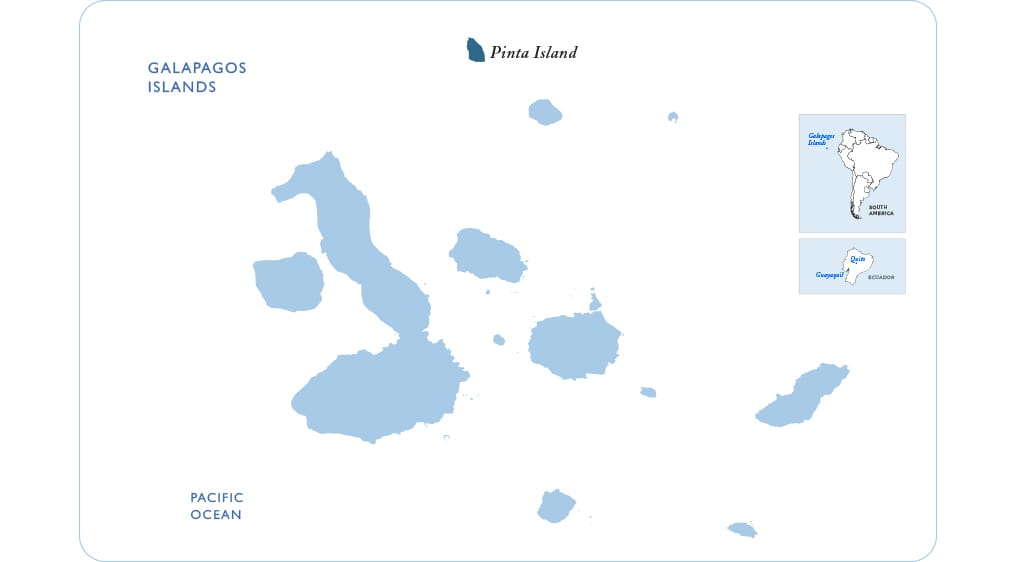

On January 28, 2008, Galápagos National Park official Victor Carrion announced that 53 sea lions (13 pups, 25 youngsters, 9 males and 6 females) at Pinta had been found killed with their heads caved in. Pinta island Republic of Ecuador, Pacific Ocean, Latin or South America, Galapagos Islands, Archipielago de Colon map vector. Pinta Island is also home to swallow-tailed gulls, marine iguanas, Galapagos hawks, Galapagos fur seals and a number of other birds and mammals. A prolonged effort to exterminate goats introduced to Pinta was completed in 1990, and the vegetation of the island is starting to return to its former state. Its rugged terrain, caused by abundant lava flows, makes locating animals a challenge. The island's vegetation was devastated over several decades by introduced feral goats, thus diminishing food supplies for the native tortoises. Tortoises tend to move around a lot, and the island, at over 230 square miles, is a large area to search.

Pinta is one of many islands in the Galapagos chain. It has an area of 60 km2 (23 sq mi) and a maximum altitude of 777 metres (2,549 ft). But theres a bizarre twist in the story: a few Pinta Island tortoises may still be alive. The most northern major island in the Galápagos, at one time Isla Pinta had a thriving tortoise population. Pinta Island (Spanish: Isla Pinta), also known as Abingdon Island, after the Earl of Abingdon, is an island located in the Galpagos Islands group, Ecuador. He was the last known representative of the subspecies Chelonoidis nigra abingdonii. Pinta was the original home to Lonesome George, perhaps the most famous tortoise in the Galápagos Islands. The rocks around the north of the island were previously known as Norris's Rocks, while an outcropping on the west side of the island was known as Rycaut's Rock.

It has an area of 60 km 2 (23 sq mi) and a maximum altitude of 777 meters (2,549 ft). Pinta is a shield volcano with an extensive underwater footprint originating from NNW-trending fissures. The youngest islands, Isabela and Fernandina, are still being formed, with the most recent volcanic eruption in 2007. The elongated island of Pinta is the northernmost of the active Galápagos volcanoes.


 0 kommentar(er)
0 kommentar(er)
